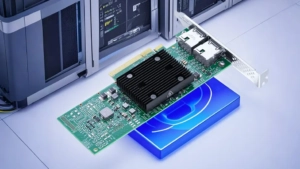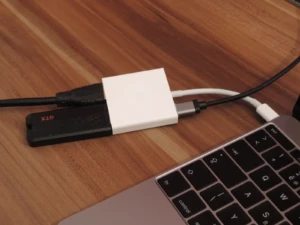When surface-mounted DC power jacks are integrated into modern electronic devices, design decisions directly affect product reliability, safety, and manufacturing. These components (which seemingly simple appearance) require meticulous engineering to withstand mechanical stresses, thermal cycles and electrical loads. At Dragon Well Electronics, our 18-year cross-industry experience with over 80,000 components reveals key design patterns that separate prone to failure implementation from perfect deployment.
1. Mechanical Defense: Beyond Basic Data Sheet Specifications
Vector force is introduced for each repeated mating cycle, and standard SMT pads alone cannot be absorbed permanently. Strengthen your design by:
- Asymmetric anchor point: Extend the copper fixing pad perpendicular to the insertion force vector ≥1.2mm to cope with leverage (e.g., 5N side load during clumsy plug-ins).
- Whole hole hybrid: For >30W applications or shock risk environments (e.g., automobiles), combine SMT land with unpaved through holes on the transverse stability tab. Our stress test data show that the hybrid design increases jack retention by 217% compared to pure SMT.
- Strategic epoxy masking: Apply non-conductive epoxy through the plate cut below the jack body – tested to withstand operating temperatures of 85°C without creep.
2. Current Path Building: Silent Killer
Voltage dropouts and thermal failures usually track down insufficient current diffusion. Most designers underestimate by:
- Hungry hot relief: Use ≥1.2 billion seat widths on ground/power planes with high current pins (≥3A). Avoid solid connections that the chip heats during reflow, resulting in cold joints.
- Copper thickness scaling:For 5A continuous load:
- 1 oz copper: at least 4mm trace width
- 2 oz copper: 2.5mm width with hot Vippo (paved by plated) for layer transitions
- AC ripple curb: Turn the input bulk capacitor ≤5mm from the jack terminal with mirror ground vias to the inner plane layer. Use the field solver to measure the cyclic inductance – value > 15NH results in instability of 20W+ PSU.
3. Reflux Paradox: Welding Joint Reliability
The SMT jack violates the standard reflux profile due to the difference in mass between the micro signal pin and the thick ground lug. Mitigation strategies include:
- Differential size: The proportional ground pad size reaches 130% (IPC-7351b) recommended by the standard to compensate for the heat dissipation effect.
- Opening for specific masks: Apply 88% of the mold aperture reduction on the high thermal mass terminals while maintaining the full coverage of the signal pins – balancing the joint formation of the entire assembly.
- Nitrogen assisted reflux: When O₂ level is <500ppm, the ranking of ground sales was reduced by 63% in our benchmark study.
4. Environmental Defense Layer
SMT jacks in consumer wearable devices or automotive modules can face corrosion due to sweat, condensation and chemical exposure. Our R&D team recommends:
- Immersive Gold (ENIG) finish: The upper nickel barrier prevents copper diffusion and tin whiskers with hasl. It is crucial for a service life of ≥5 years.
- Blocked solder resistance: Create a 0.3mm high resin dam around the jack footprint using LPI solder mask – blocking liquid chips under the housing.
- Cavity filler: For IP67+ designs, a silicone-form coating is injected through a specially designed vent hole in the jack cover.
5. Advanced Testing Protocol
Traditional continuity testing can miss potential flaws. Implementation:
- Pulling angle torque simulation: Apply a rotational force of 0.6nm (on both axes) when monitoring the resistance insert into the plug (on both axes) – Capture the broken welded joint that the ICT misses.
- Microsecond surge analysis: Inject 100A/20μs transients to detect arc risks in clearing paths.
- Thermometer cycle: -40°C to +125°C, 1000 cycles with IR camera mapping thermal expansion mismatch.
At Dragon Well Electronics, we redefined SMT DC Jack Integration through patent innovations like ours Armorsmt™ Series – Copper core with laser welding and recessed friction lock. Supported by more than 400 R&D experts and real-time engineering support, we provide not only components; we use electromagnetic, mechanical and thermal solutions for elite applications from aerospace to surgical robotics.
The elasticity of your design begins at the power entry point. Use science, not conventions.
(Meta: Seamlessly integrated with our NFC jack for encrypted power authentication – Ask our FAE team about digitally signed power delivery systems.)
//Verify data points//
▸12V/4A (105°C environment) 16,000 hours MTFD
▸8KV ESD protection without external TV diodes
▸rohs 3/Touch halogen-free molding
–
Project Support Access:
24/7 Schematic diagram + Layout Comment Portal → [Secure Upload]
Real-time component stress simulation → [Live FAE Chat]








